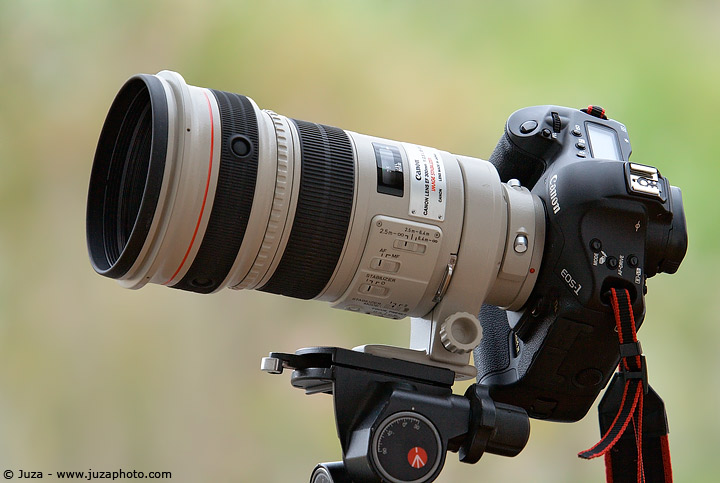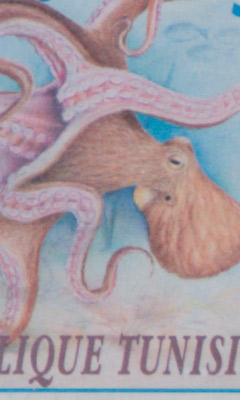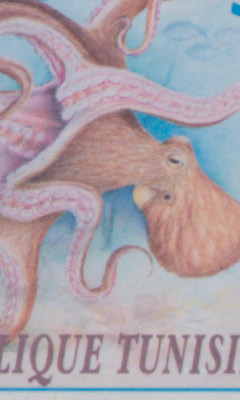
|
| Accept Cookies | Customize | Refuse Cookies |

Lens Specifications
| � | �� |
| �Focal length | ��300 mm |
| �Lens construction | ��17 elements in 13 groups |
| �Number of Diaphragm Blades | ��8 blades |
| �Angle of view | ��8.20º(on 35mm camera); 5.50º (on APS-C) |
| �Max. Magnification | ��0.13x (1:8) |
| �Maximum Aperture | ��f/2.8 |
| �Minimum Aperture | ��f/32 |
| �Image stabilization | ��Yes (second generation, 2 stops) |
| �Autofocus | ��Inner ultrasonic motor (ring-type USM) |
| �Full Time Manual Focus | ��Sì |
| �Closest Focusing Distance | ��2.5 meters |
| �Filter size | ��52 mm (Drop-In) |
| �Dimensions | ��128 x 252 mm |
| �Weight | ��2550 g (2400 g without the tripod ring) |
| �Weather sealing | ��Yes |
| �Price | ��$ 4000 |
| �Announced | ��1999 |
| �Accessories | ��Canon Dust Cap E, lens cap (E-145), lens hood (ET-120), lens case 300, removable tripod mount ring.� |
Description
As all Canon superteles, the 300 2.8 has extremely good built quality - it is a rock solid lens, made of magnesium alloy and weather sealed with rubber gaskets. Even though it can not be considered "featherweight", it is one of the lightest and smallest superteles (only the 400 f/4 DO and the 200 f/2 are smaller and lighter).Similar Lenses (for Canon EOS)
Both Sigma and Tamron offer 300 2.8 lenses; they are much cheaper than Canon, but they don't come even close in term of built quality, AF and image quality. The only real "alternatives" to the 300 2.8 are the super light Canon 400 f/4 DO IS and the bigger, heavier Canon 500 f/4 L IS. I recommend the Canon 400 f/4 DO IS only if you absolutely need its small size and weight, otherwise the 300 2.8 is a better lens in every respect; it is brighter and sharper.Image Quality
Remember that you can easily adjust color, distortion, chromatic aberration and vignetting with Photoshop; even though I list every aspect of image quality I don't consider these aspects very important as the other three that can not be corrected with Photoshop (sharpness, contrast and flare). You can enhance a little sharpness and contrast with PS, but the results are not as good as a photo taken with a lens that is sharp and contrasted.| � | �� |
| �Sharpness | ��the sharpness is outstanding even wide open; it reaches the truly best between f/4 and f/5.6. |
| �Contrast | ��the contrast is excellent. |
| �Color | ��nothing to nit; the colors are perfect, without any lens-introduced color cast. |
| �Flare | ��so far I have never had problems of flare with this lens. |
| �Distortion | ��as you can expect from a prime, tele lens, there is not any visible distortion. |
| �Chromatic aberration | ��the CA is almost non-existent. |
| �Vignetting | ��there is a very slight vignetting at f/2.8, that quickly disappears from f/4.� |
Image Quality (with Canon 1.4x TC)
| � | �� |
| �Sharpness | ��the sharpness is good at f/4, and very good from f/5.6 |
| �Contrast | ��the contrast good. |
| �Color | ��the colors are perfect, without any lens-introduced color cast. |
| �Flare | ��I have never had problems of flare with this lens. |
| �Distortion | ��there is a little of barrel distortion. |
| �Chromatic aberration | ��the CA becomes a little more visible, in particular in the corners, but it is still a minor annoyance. |
| �Vignetting | ��There is a little of vignetting wide open, that disappears at f/5.6.� |
Image Quality (with Canon 2.0x TC)
| � | �� |
| �Sharpness | ��the sharpness is acceptable wide open at f/5.6, but I recommend to stop down to f/8 to get the best detail, if there is enough light. |
| �Contrast | ��the contrast good at f/5.6, but it improves a lot at f/8. |
| �Color | ��the colors are perfect, without any lens-introduced color cast. |
| �Flare | ��I have never had problems of flare with this lens. |
| �Distortion | ��there is a little of barrel distortion. |
| �Chromatic aberration | ��there is a little of CA, in particular in the corners. |
| �Vignetting | ��There is a little of vignetting wide open, that disappears at f/8.� |
In-depth look: sharpness with teleconverters and comparison with 600 f/4 IS
Since I'm going to use often this lens with TCs, I was curious to test it with Canon 1.4x and 2.0x TCs, and to compare it with the 600 f/4 L IS. The following images are 100% crops taken near the center of the image; the photos had been converted from RAW without any enhancement of contrast or sharpness. Of course I used tripod, MLU, and I repeated the test to ensure precise and realiable results.| � | ��f/4 | ��f/5.6 | ��f/8 |
| �300 | � � | � � | � � |
| �1.4x | � � | � � | � � |
| �2.0x | � �Not available (the widest aperture with theteleconverter 2.0x becomes f/5.6) | � � | � � |
| �600 | � � | � � | � � | �
Image samples
The following samples show the image quality of the Canon 300 f/2.8 L IS USM, with and without TCs. The photos has been taken in RAW format and converted with Photoshop CS3; I processed each photo to optimize the image quality (contrast, color, sharpness), and I saved them as high-quality JPEG for web display. You can download both the processed JPEG and the original, untouched RAW files.


Other Reviews
- Canon EF 300 f/2.8 L IS USM review by The-Digital-Picture (Bryan Carnathan)Conclusions
ProsConclusion
The Canon 300 f/2.8 is one of the best Canon lens ever made; it has awesome image quality, and it is an excellent and versatile choice for many genres of photography - nature, sport, portrait. With the teleconverters you get a very good reach, and its size makes it much easier to carry around than 500 or 600 teles. If you don't need the extreme reach of 500/600 + TCs, the 300 2.8 is a fabolous lens, very highly recommended! JuzaPhoto contains affiliate links from Amazon and Ebay and JuzaPhoto earn a commission in case of purchase through affiliate links.
JuzaPhoto contains affiliate links from Amazon and Ebay and JuzaPhoto earn a commission in case of purchase through affiliate links.May Beauty Be Everywhere Around Me